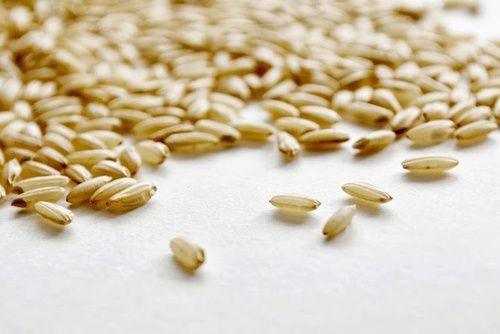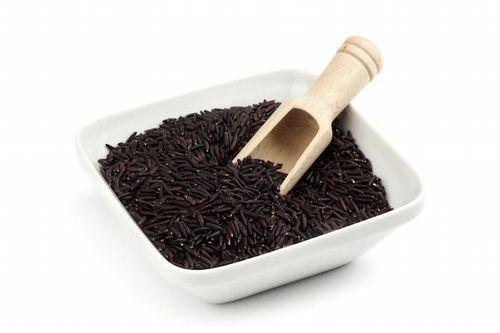Il brown rice it is rice normally consumed that is not deprived of its outer skin. Rich in fiber and substances with beneficial properties, it is recognizable by its darker color. Let's find out better.
> Description of brown rice
> Brown rice, an ally of
> Properties and benefits of brown rice
> Calories and nutritional values of brown rice

Brown rice description
Rice (Oryza sativa), is a plant of the Graminaceae family. It's the cereal most consumed in the world and it represents the staple food of about one third of the world population.
They say about him
Brown rice is a starchy food, easily digestible and assimilable even in case of food intolerances. The skin that covers the grain, known as lollo, is instead rich in fiber, useful for the benefits to the intestine and against the formation of intestinal polyps.
Brown rice is recommended in slimming diets because it is able to give a sense of satiety greater than that of other cereals.
Brown rice, ally of
Brown rice is a food with a detoxifying, laxative and action refreshing. Being a gluten-free cereal, it can be consumed without any problem by people affected by celiac disease.
Properties and benefits of brown rice
Brown rice is a food highly digestible which does not tire the stomach, so it is ideal for those who have problems with drowsiness after meals. Its consumption is recommended for people who want to lose weight because the energy that accumulates with brown rice is consumed more slowly throughout the day without the accumulation of fat deposits.
Integrated rice is recommended instead of pasta and can also be eaten once a day, possibly in pairing with vegetables; in this case, it is also useful against constipation. In case of diarrhea, instead, it would be useful to drink the cooking water of the rice.
The presence of the niacin, a B vitamin found in brown rice, results protective for the cardiovascular system and the gastrointestinal system.
Brown rice contains a good amount of selenium, useful for the prevention of cancer and against diseases affecting the heart. In addition, brown rice also contains manganese (a cup of rice provides 80% of the daily requirement) which is useful for the health of the nervous and reproductive systems.
Brown rice is rich in antioxidants and fiber, which not only improves the gut but can also help prevent colon cancer; it helps stabilize blood sugar levels, so it is a great choice for diabetes sufferers, and is perfect for children as it has excellent nutritional properties and thus helps their growth.
Brown rice can also be used against candida, because it contains few sugars, usually not suitable for this infection. Finally, being a wholemeal cereal, eating brown rice even all rounds is particularly beneficial for women postmenopausal suffering from high cholesterol, high blood pressure or heart and vascular problems.
Calories and nutritional values of brown rice
Brown rice is composed of 12% water, 7% proteins, carbohydrates, 69,2%, sugars, dietary fiber and lipids; among the minerals we include the iron, sodium, potassium, phosphorus, selenium, manganese, copper and zinc. Brown rice contains some B vitamins (B1, B2, B3, B5 and B6), vitamin E, vitamin K and J.
As far as the fundamental amino acids are present: alanine, arginine, cystine, glutamic acid, aspartic acid, valine, tryptophan, leucine, lysine, glycine, serine and tyrosine.
Brown rice provides 370 calories per 100 grams of product.
You can also learn more about the properties and use of Venere rice

Curiosity
Brown rice differs from polished rice for the different processing method to which it is subjected which is much simpler; in fact, since it does not undergo the separation of the parts external to the grain (chaff) it only needs to be vacuum packed in order to avoid easy oxidative phenomena.
Il white rice on the market it comes brushed with talc and glucose and then made brilliant through the use of seed oil and paraffin. These substances may contain magnesium silicate which has a carcinogenic action. In particular, then, paraffin can cause damage to the gastric mucous membranes.
Furthermore, in the process of processing from brown rice to white rice, about 70% of the mineral salts are lost, and vitamins, starch and proteins also suffer a sharp decrease.
Dietary fiber, on the other hand, useful for our entire body, disappears completely in refined white rice.
A recipe with brown rice
Brown rice is a very popular food all over the world and in the East it is never lacking at the table. To prepare and cook it at its best, rice must be rinsed under running water with the help of a colander. After that, you can proceed with cooking by putting one part of rice and two and a half parts of cold water in a saucepan and bring to a boil, then lower the heat and let it cook for about 40/50 minutes.
READ MORE
Brown rice among the foods rich in fiber: discover the others
Other articles on rice:
> Brown rice is good blood
> Discover the varieties of rice and their properties


























